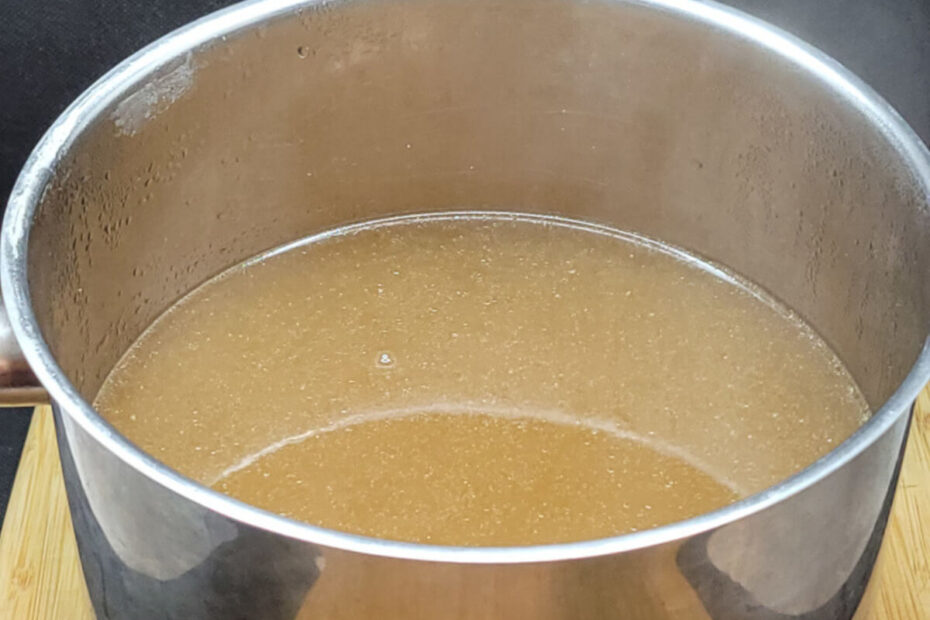Start with a whole Bone-in Ham and make the most of every part. The Ham meat becomes a delicious Braised Ham. While the Ham Bone and surrounding meat create a rich Ham Bone Broth. Simmering the Bone & Fat forms a flavorful Fat Cap that you can scoop off and refine by heating to evaporate any water. It’s perfect for frying or making a roux. The meat left on the bone becomes incredibly tender as it soaks in the broth. During the second boil, aromatics are added to elevate the flavors even further. Creating a versatile base for soups, stews, and so much more.
You’ll love this recipe because it transforms a whole ham into pure culinary magic, ensuring nothing goes to waste. The broth is deeply flavorful, the tender meat practically melts in your mouth, and the rendered fat is like liquid gold for your kitchen. It’s versatile, letting you create soups, stews, gravies, and even fried dishes that burst with savory goodness. This recipe isn’t just cooking—it’s turning simple ingredients into something extraordinary.
Ham Bone Broth Ingredients
Water, Ham Bone with Ham Meat, Onion, Carrot, Celery, Garlic, Bay leaves with Black Peppercorn or Peppercorn Medley.
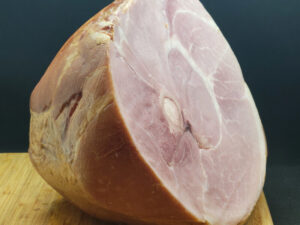
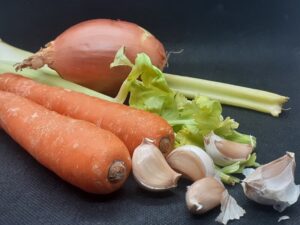
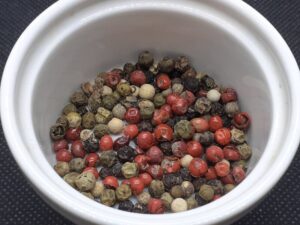
Ham Bone
The very first we need is a Bone in Ham used for the Holiday Ham Feast to make Brasied Ham. From this, we extract the Ham bone with a good amount of surrounding meat and Fat to make Ham Bone Broth.
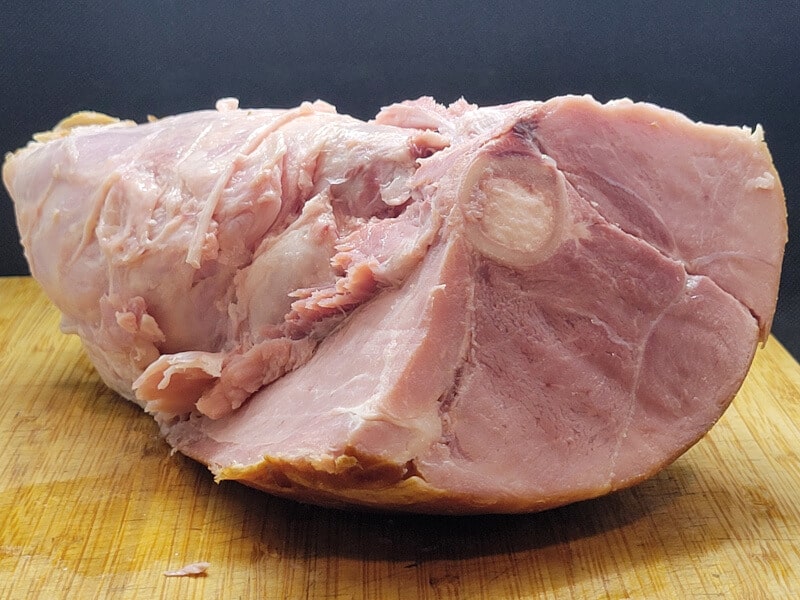
How to remove the Ham Bone
Remove the Ham Bone along with the surrounding meat to make the Ham Bone Broth. This is easier than you think. Just remember that the muscle sections are separated by a thin layer of fat. Once you make a slit in this layer of fat between the muscles deep enough. Pull them apart, using the knife to make small slits if needed to assist in separating the muscle group.
In the below image, you can see the Bone is closer to one side than the other (offcenter) and separated by a muscle group. All you have to do, is make a slit where the muscles separate and run the tip of the knife along the bone, letting the bone guide your knife. Repeat for the other side and then tear or pull away the bone. It should tear away with the muscle groups intact surrounding the bone. It may need help with the knife to make small slits to release it. But in general it should tear away nicely and fully intact. The Ham Bone with surrounding meat will be used to make this Ham Bone Broth recipe.
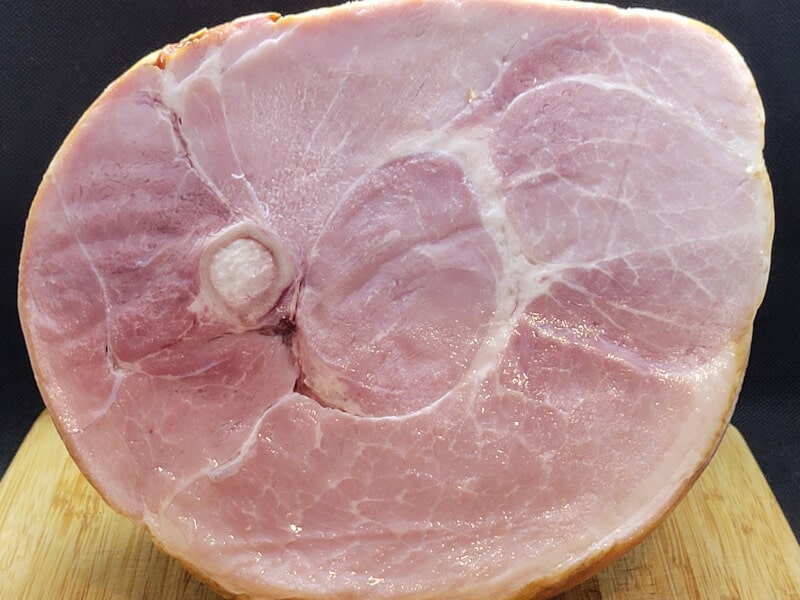
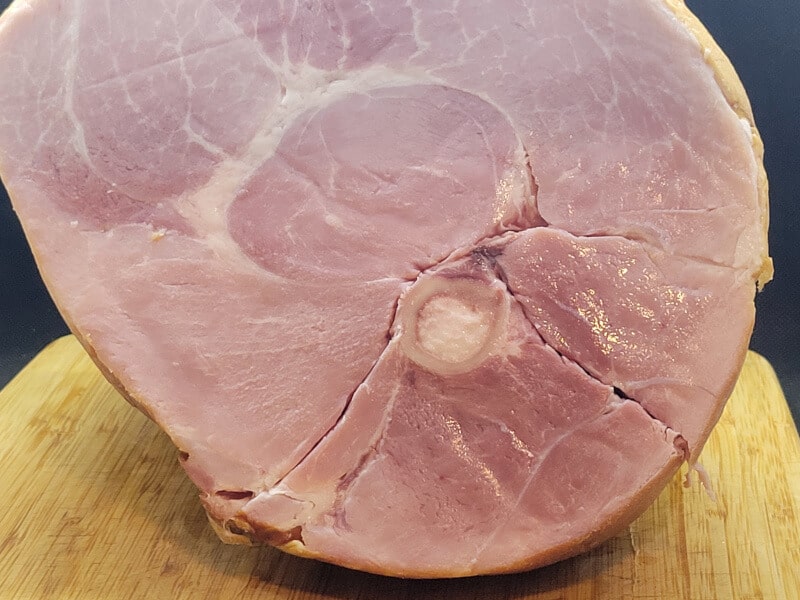
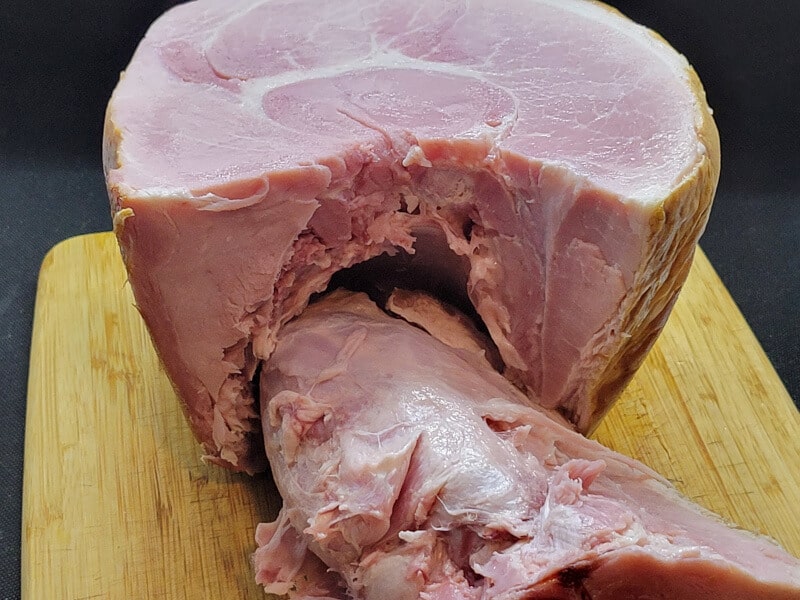
Ham Fat
We also need all the fat chopped small so that we can render it out while simmering the broth. You can chop some of the fat and freeze it in Ziploc bags to toss into a recipe that requires fat. Such as Spiced Baked Beans, or other Bean dishes.
It can also be rendered out in a pan over medium low heat until crisp leaving behind the fat to use for frying. This technique of rendering fat is covered in the Rendered Fat ~ Food for though. The remaining Fat in this recipe however, is going to be rendered out through simmering.
Start by making small slits to release the fat from the meat, and then pull the fat while making small slits with the tip of your knife to assist the fat from pulling away from the meat. Remove the Fat from all pieces of meat. Once you have all the fat trimmed away, dice it to maximize fat rendering. Smaller pieces will more readily release fat.
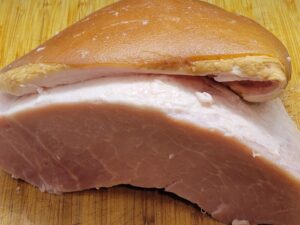
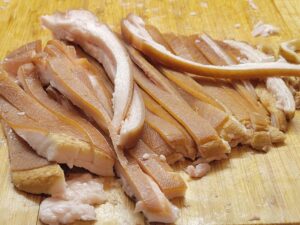
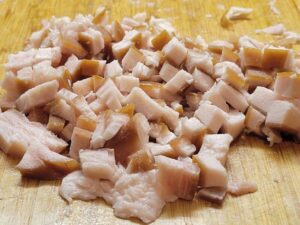
At this point we have Ham Meat, some of which can be used for Braised Ham, and the remaining Ham meat portioned out for various other meals. If you need some ideas, check out our Holiday Ham Feast Recipe. Which includes portioning out some of the Ham for Ham & Cheese Biscuits, Ham & Cheese Pasta Salad, Various Ham Based Soups and Sandwiches, plus other ideas.
With the entire Ham and the meat set aside. We also have the Ham Bone with surrounding meat and Ham Fat that will render out while making the Ham Broth. Some of the Ham Fat can be diced and frozen to include in various Bean dishes, like the Spiced Baked Beans. All that is left now, is to make the Ham Bone Broth.
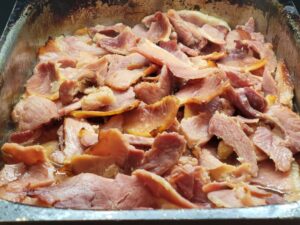
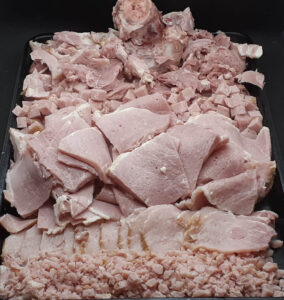

How to make Ham Bone Broth
Ham Bone Broth is easy to make, but it takes time, a full 24 hours or so. This is mainly due to the 4–6 hours of simmering initiallyl. Followed by an overnight rest to solidify the fat on top, creating a Fat Cap. Then going through a final simmer to strengthen the Ham Broth, deepen the color and deliver exceptional flavor.
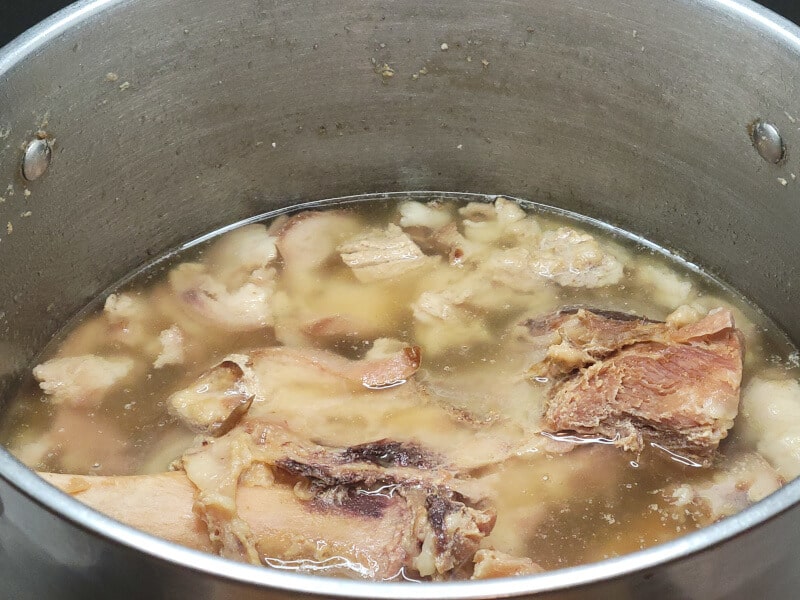
Simmer
Toss the Ham Bone with a good amount of surrounding meat along with fat trimmings, diced small to maximize fat extraction, and fill the pot with water.
Simmer for 4–6 hours while partially covered. Stirring occasionally. It should reduce down to about half.
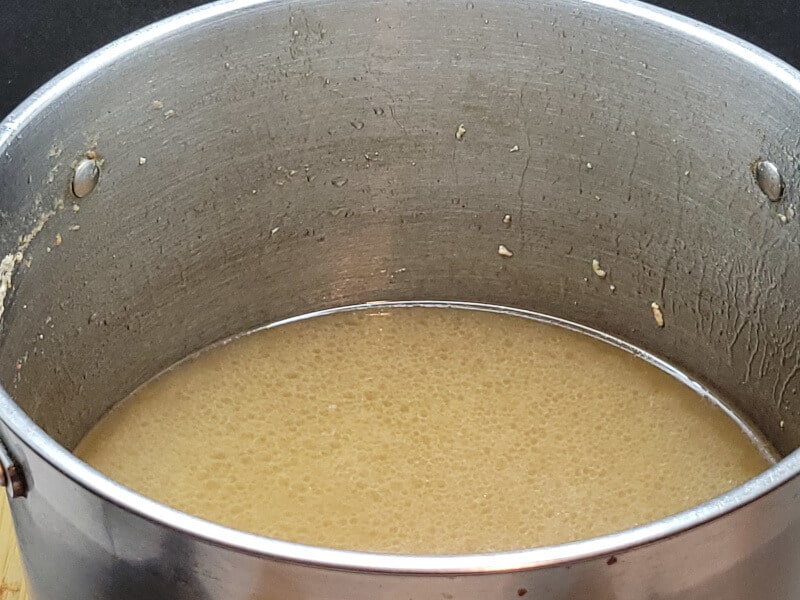
Strain
Strain out the Ham Broth and place it back into the pot along with the Ham Bone/s and Meat, place a portion of the fat in Ziploc bags to freeze. These too can be added to various bean dishes to contribute fat.
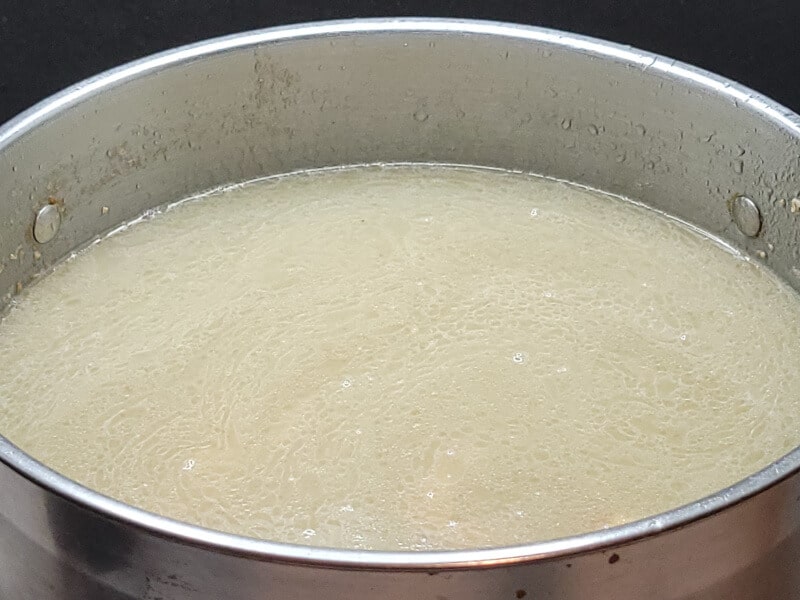
Cool
Fill the Pot with very cold water again and let cool for 1 Hour, before placing the entire pot into the fridge overnight.
This excess cold water helps to cool the broth down and dilute it so that it doesn’t soldifiy with the meat and bones still in it.
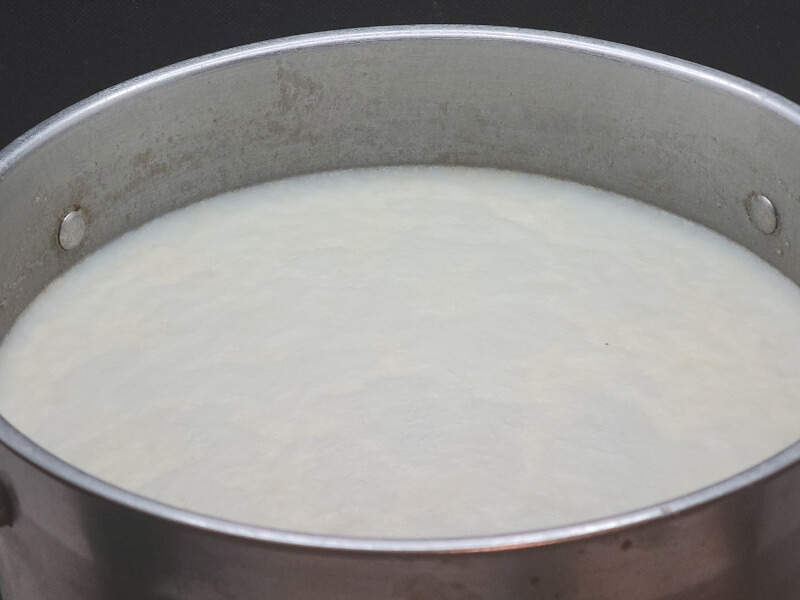
Refrigerate Overnight
There will be a Fat Cap that has settled on top. Gently skim the fat with a slotted spoon and place into a sauce pot. Don’t worry if you get a bit of the broth included with the Fat, this will be cooked out later.
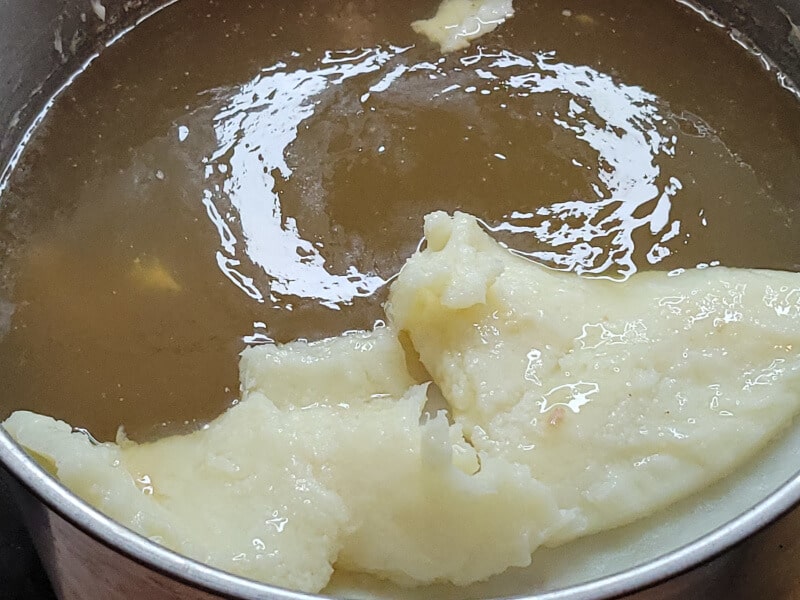
Ham Fat Cap
The Ham Broth should have had enough water added so that the broth did not solidify, allowing you to scoop the Bones and meat out. Remove all the meat and set this aside to add to your Soup or Stews, and place the Bones back into the pot for the second simmer.
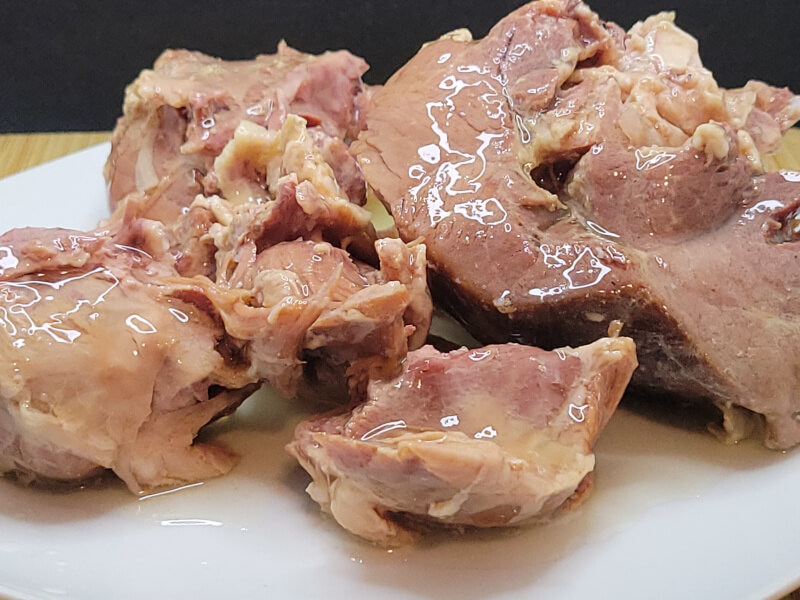
Ham Meat
Cover and refrigerate the meat until it is needed. At that point, the meat can be torn into smaller pieces and added to soups or stews towards the end.
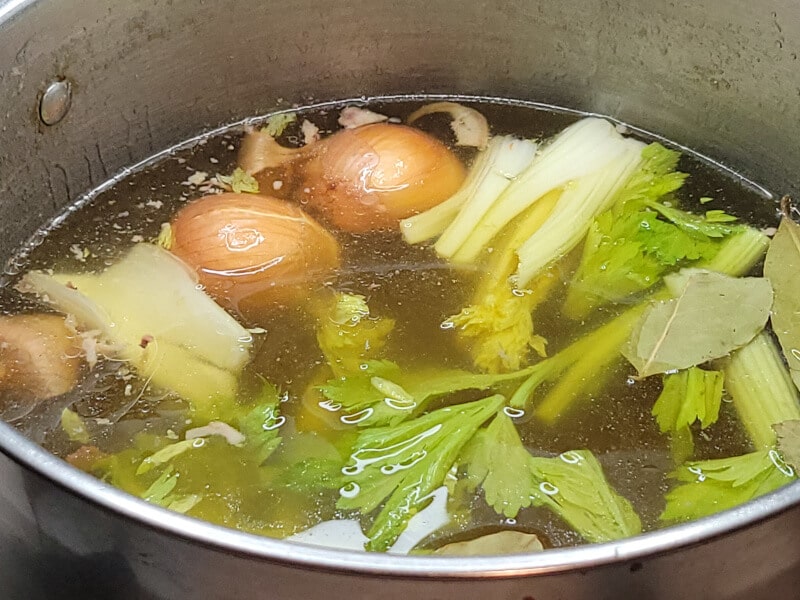
Second Simmer
It is during the second simmer where we focus on flavor, and additional ingredients can be added here to boost the flavors. All you do here is simmer uncovered over medium heat until the broth taste good. Neither too weak nor too strong. Although, if it is too strong, more water can be added.
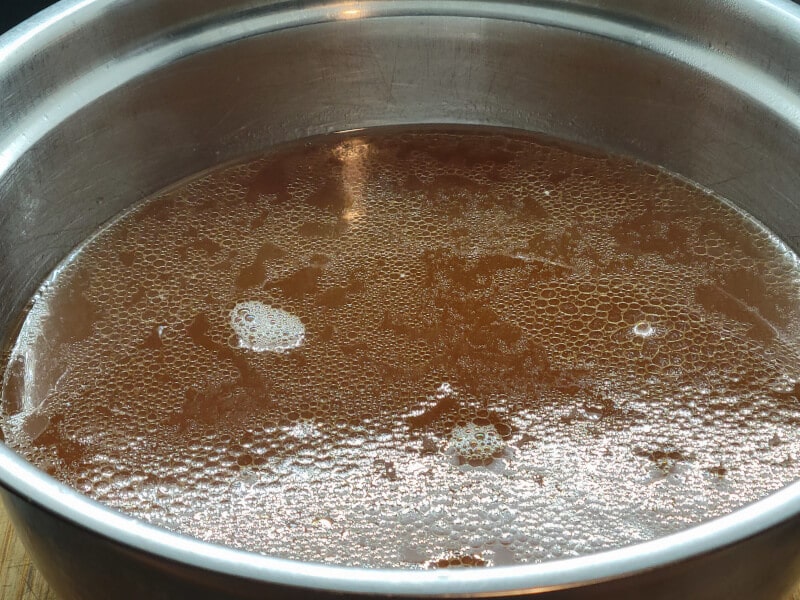
Strain
The Ham Broth should have reduced quite a bit. Taste it and if it tastes good, it is ready to be strained. Otherwise, keep reducing it until good flavor is developed.
Rendering Ham Fat
The initial rendering of the Fat is done in the first simmer and scooped off of the refrigerated Ham Broth and placed into a sauce pot. Although, this will contain small bits of fat and water. The water content significantly reduces the shelf life of rendered Ham Fat and therefore needs to be removed. In order to do this, we heat the Fat up pass the boiling point and into the frying stage at about 250 F – 300 F. It’s at this point we can be sure there is no water in the fat and the fat will store for a long time.
Caution! As water evaporates when heated past the boiling point, the fat quickly shifts from boiling to frying. Any remaining pockets of water or water trapped in bits of solid fat will cause explosive splattering. You can place a splatter screen over top to minimize any mishaps. The Oil should be heated to about 250F degrees before being removed and left to cool.
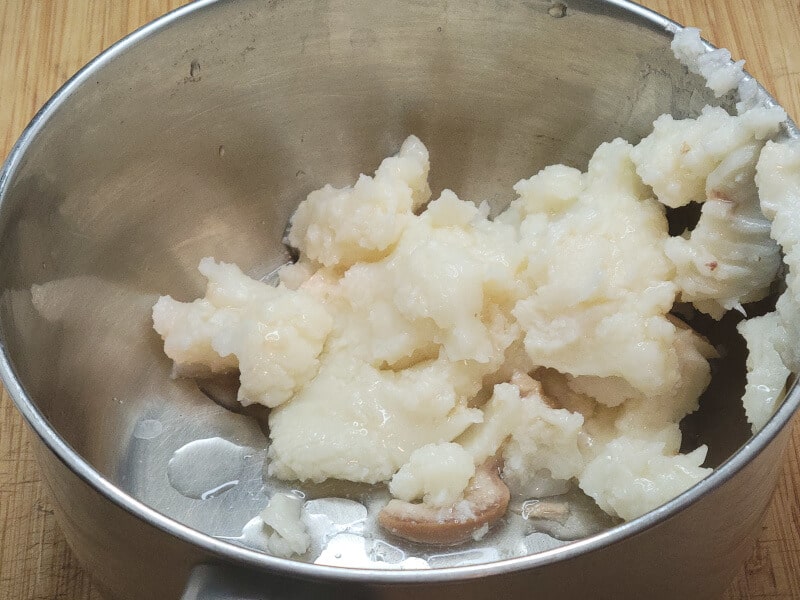
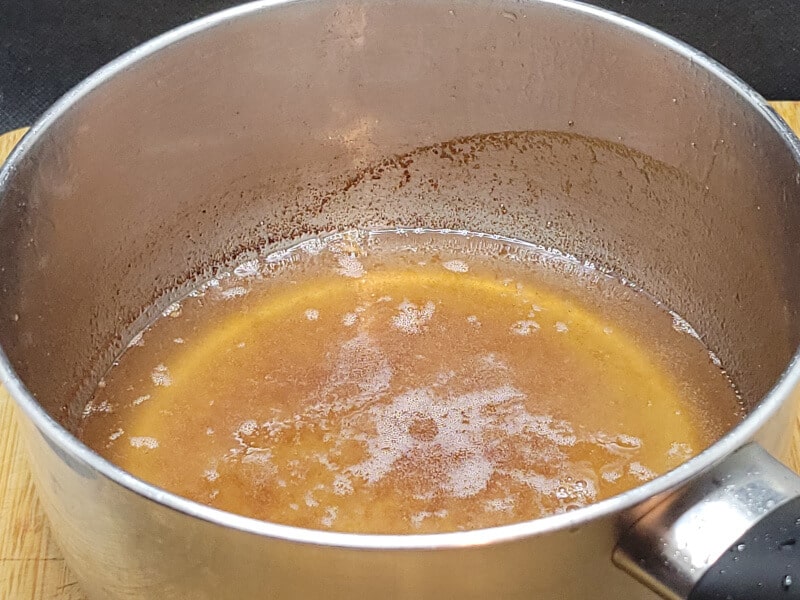
Evaporating the water in the Fat
The deep sauce pot with the fat can now go over medium high heat to evaporate the water content. Careful here, it will boil aggressively and then go calm, right before it goes all chaos.
If there are any bits of fat, remove or strain them out or else they will start to explode as the fat gets hotter, and they release their water content. Use a Deep Pot. Optionally with a splatter screen.
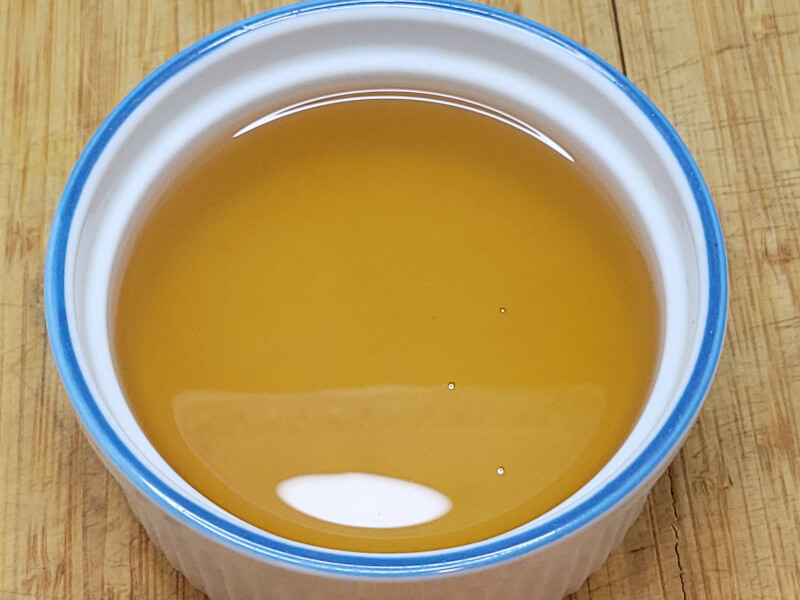
Rendered Ham Fat
The fat can then be cooled down some before emptying into a bowl and used in various recipes.
Rendered Ham Fat
Rendered Ham Fat is excellent to use in roux for Ham based Soups or Stews. It is also good to fry things in, such as Hash Browns. The solid Ham fat can be diced and saved for Bean dishes, elevating the flavor in those dishes. The rendered fat will turn a white color, much like lard, and is used in the same way. It can stay good for a long time because the water has been removed from it.
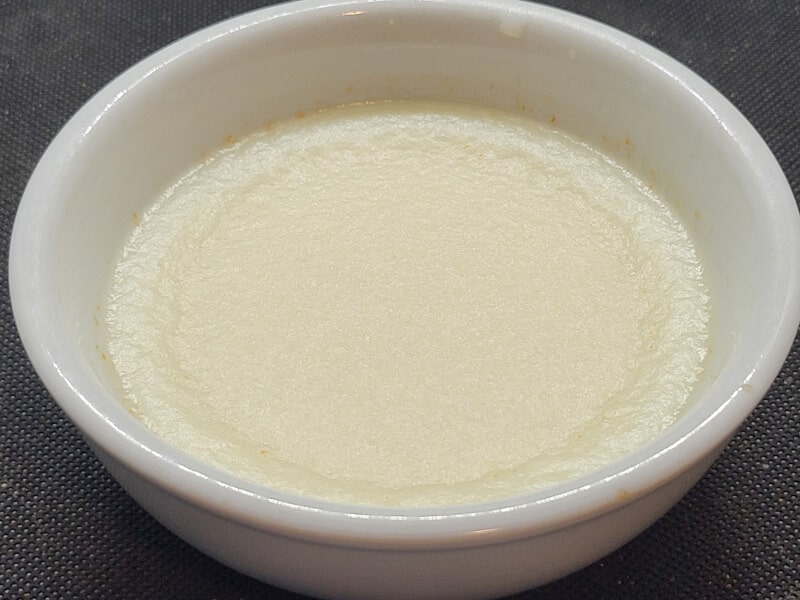
How to Store Rendered Ham Fat
To properly store rendered animal fats in the fridge:
- Cool Completely: Allow the fat to cool to room temperature after rendering.
- Strain Thoroughly: Strain the fat through a fine mesh sieve or cheesecloth to remove any impurities or particles, which can accelerate spoilage.
- Use an Airtight Container: Transfer the fat to a clean, dry, airtight glass or food-safe plastic container to prevent exposure to air and moisture.
- Label the Container: Write the date and type of fat on the container for easy identification.
- Store in the Coldest Part: Place the container in the coldest part of your fridge, typically the back, to maintain a stable temperature.
Properly stored, rendered animal fat can last up to 6 months in the fridge, depending on cleanliness during rendering and storage. For even longer storage, freeze the fat in small, portioned containers.
Ham Broth
Ham Broth is used in dishes covering Casseroles, Bean dishes, Soups & Stews. While I usually use this up right away, it can be portioned out and refrigerated to use within 1 week or frozen for longer storage.
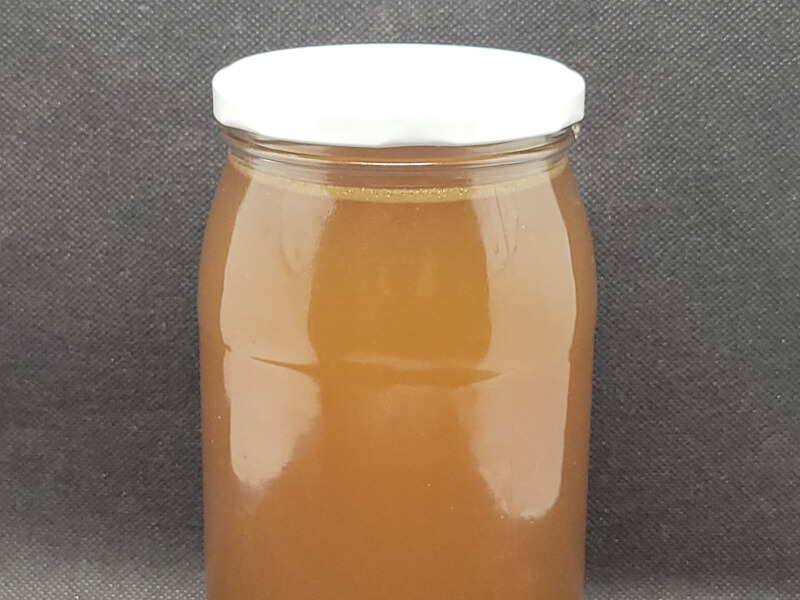
How to Store Broth
To properly store Homemade Broth in the fridge:
- Cool Quickly: After cooking, cool the broth to room temperature quickly to reduce bacterial growth. Place the pot in an ice bath or divide the broth into smaller containers to speed up cooling
- Strain Thoroughly: Pour the broth through a fine-mesh sieve or cheesecloth to remove solids like bones, vegetables, and seasonings.
- Use an Airtight Container: Transfer the strained broth into clean, airtight glass jars, food-safe plastic containers, or resealable freezer bags. Leave about 1 inch of space at the top for expansion if freezing.
- Label the Container: Write the date and contents on each container for easy tracking.
- Store in the Coldest Part: Store in the fridge for up to 1 week. For longer storage, freeze it.
- Freeze for Long-Term Storage: Freeze broth in portioned containers, ice cube trays, or freezer bags. It will last 3–6 months in the freezer.
Reheat Safely: When using stored broth, bring it to a full boil before consuming to ensure safety.
How much Ham Broth from One Ham Bone
How much Ham Bone Broth you get really depends on how much meat is included with the Ham Bone and how weak or strong you want it, along with simmer time. Generally, you can expect anywhere from 8 to 10 cups of Ham Bone Broth or less.
With about 10 cups of Ham Bone Broth, you’ll have a rich and flavorful base that can be used for soups, stews, or even as a savory addition to rice or sauces. If you find it too concentrated, you can dilute it with water, but with that much broth, you should have a lot of flexibility to create hearty dishes. If you find it too weak, simmer it longer to reduce and concentrate the flavors.
Recipes using Ham Bone Broth
Ham Bone Broth or Ham Broth, the Ham Meat or the Ham Fat are used to make the following JAHZKITCHEN recipes and in other dishes;
- Ham Hodge Podge – which just uses the meat from this reicpe
- Ham Bone Soup
- Split Pea Soup with Ham
- Chourico Ham Soup
- Spiced Baked Beans – using the diced and frozen pieces of ham fat
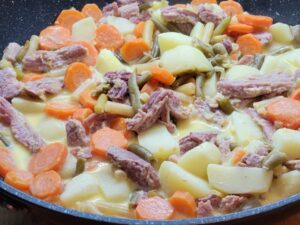
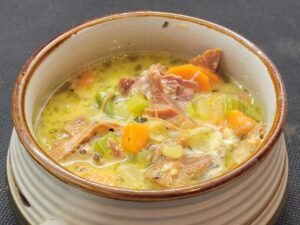
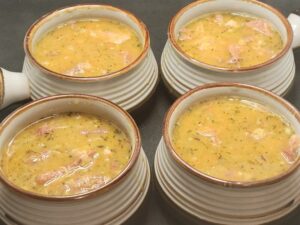
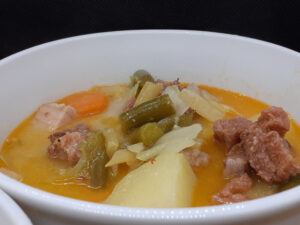
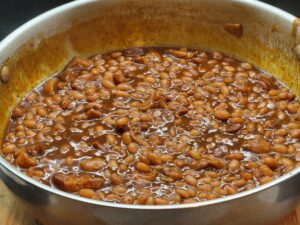
Equipment
- 1 Large Stock Pot
- 1 Deep Sauce Pot
- 1 Fine Sieve
- 1 Splatter Screen optional
Ingredients
- 1 Ham Bone - with surrounding meat
- Ham Fat - chopped into small pieces
- As Needed Water - to fill the large pot
- 1 Onion - Cut in half skin stil on
- 3 Cloves Garlic - Crushed
- 2 Carrots - snapped in pieces
- 2 Celery - snapped in pieces
- 1 tsp Black Peppercorn
- 1-2 Bay Leaves
Instructions
- Place the ham bone, fat, and trimmings in a stockpot, fill with water, and bring to a boil. Partially cover, reduce heat, and simmer for 4–6 hours, stirring occasionally, until reduced by half.
- Strain the Broth, return the bones and meat to the pot with the broth, refill with cold water, and let cool for 1 hour before refrigerating overnight. The chopped pieces of fat can be portioned out and saved in Ziploc bags to freeze and add to various bean recipes requiring fat.
- The next day, skim off the fat with a slotted spoon and transfer it to a deep sauce pot. Heat over medium-high until it reaches the frying stage, swirling the pot occasionally. Once it settles, cool slightly and strain through a fine sieve.Be careful here, while there should be no bits of fat when heating the oil, if there is they should be removed or strained out, there will be pockets of water and when reheated will explode in the oil. Optionally, use a splatter screen. The Oil should hit around 250F before being removed from the heat.
- Remove the bones and meat. Shred the meat, cover and refrigerated to use in various dishes. Return the bones to the stockpot. Add aromatics (onion, carrot, celery, garlic, peppercorns, bay leaves). Bring to a boil, Then simmer on medium heat uncovered until flavorful. Adjust strength by simmering longer or adding water, then strain through a fine sieve.
